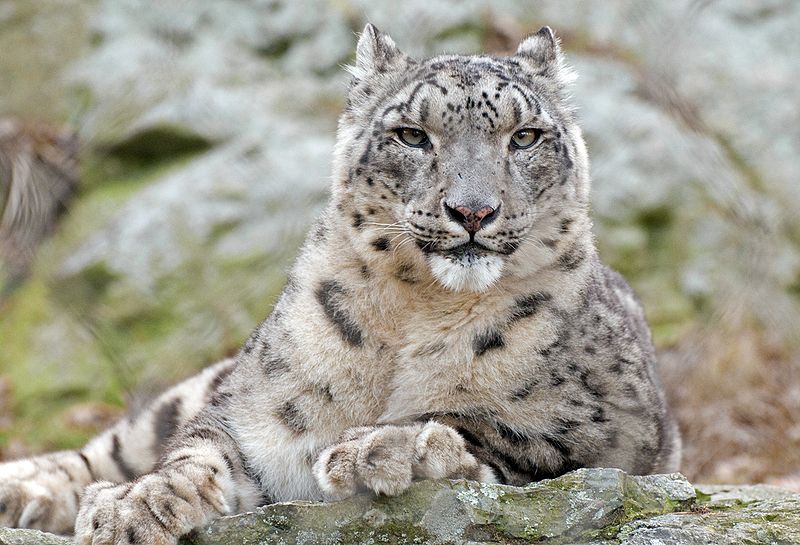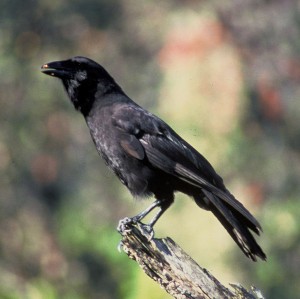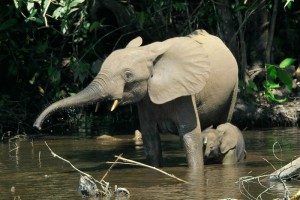Combined Threats Increase Extinction Risk
The combined threat of deforestation and wildlife exploitation has been severely underestimated for bird populations in Southeast Asia. This could lead to some species becoming extinct.
 Image: Aidenvironment, 2006 [CC BY-SA 2.0 (https://creativecommons.org/licenses/by-sa/2.0)], via Wikimedia Commons
Image: Aidenvironment, 2006 [CC BY-SA 2.0 (https://creativecommons.org/licenses/by-sa/2.0)], via Wikimedia Commons New research has discovered that the combined impact of deforestation and wildlife exploitation on bird numbers is severely underestimated and could lead to some species becoming extinct.
Scientists from the University of Sheffield and the National University of Singapore focused on Sundaland, a hotspot of biodiversity in Southeast Asia where habitat loss, and hunting and wildlife trades are particularly intense. When loss of forest habitat and bird trapping in the region were examined together, 308 forest-dependent bird species showed a much higher than average population loss than when the threats were accounted for separately.
The research, conducted between 2016 and 2017 and published recently in Nature Communications, also suggests that about 50 to 90 of forest-dependent species in the region, such as the ruby-throated bulbul and white-crowned hornbill, will be extinct by 2100. The study calls for the threats to biodiversity to be considered in combination with each other in order to implement effective conservation measures.
While the International Union for Conservation of Nature (IUCN) has been tracking the different forms of threats to wildlife, the assessments tend to look at each form of threat separately. However, these threats are interconnected and the combined impact could be more severe than currently estimated.
Dr William Symes, from the National University of Singapore, says: “Recent extinctions like the passenger pigeon and the dodo present common traits like the simultaneous combination of habitat loss and active hunting. This fatal combination of ingredients is present for dozens of unique bird species in Sundaland. At current rates, vanishing forests and enormous trapping pressures are likely to drive many of them to extinction in the near future.”
Their evaluation revealed that 89% of the 308 forest-dependent bird species studied had experienced an average habitat loss of 16% due to deforestation. They also estimated that wildlife exploitation had led to a 37% decline in mean population on average.
Among the bird species studied, the researchers also identified 77 ‘commercially traded’ species that are exploited more frequently. They found that the estimated average decline for these exploited species was 15.3% from deforestation alone, but when combined with the effects of exploitation, the estimated average decline was drastically increased to 51.9%.
In addition, the assessment of the combined impact of deforestation and exploitation in the study suggests that a total of 51 species should be listed as critically endangered, endangered or vulnerable – nearly doubling the number currently listed by IUCN.
“Our study highlights the importance of considering the impact of major conservation threats in combination,” said Dr David Edwards from the University of Sheffield. “Recent habitat loss and exploitation combine to drive dramatic extinction risks to the forest specialist species of Sundaland. Without urgent policy intervention to curb deforestation and slow the quantities of birds entering the cage bird trade, many species are likely to be lost. Failing to account for these combined threats can lead to a major underestimation of threats in the IUCN Red List assessments.”
Co-author Assistant Professor Roman Carrasco from the National University of Singapore adds: “Our technique of evaluating the combined threats can be applied to other tropical forests facing similar threats, to facilitate the development of effective conservation policies. Co-ordinated efforts to curb commercial exploitation and slow deforestation, for instance, can limit the extinction of bird species.”





No comments yet.